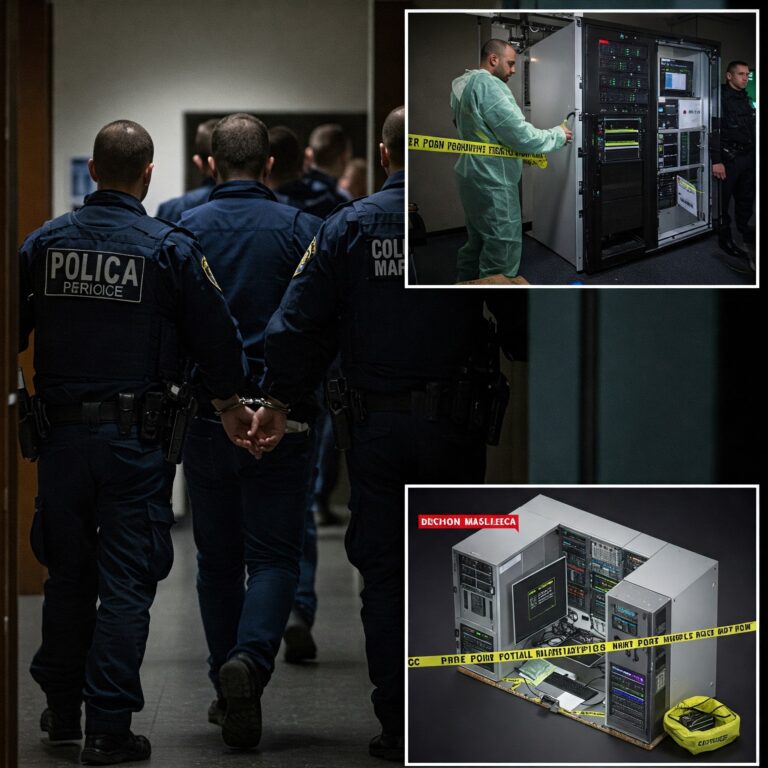Fraud and Scam Protection in Financial Institutions: 2025 Strategies, Trends, and Lessons from the MGM Cyberattack
The financial services industry is under siege. In an era defined by rapid digital transformation, financial institution groups – encompassing banks, credit unions, brokerage firms, insurance companies, and fintech startups – face an unprecedented wave of sophisticated fraud and scams. The FBI’s Internet Crime Complaint Center (IC3) reported that global losses from financial fraud exceeded $10 billion in 2023, a staggering 27% increase from the previous year, and preliminary data for 2025 suggests this trend is accelerating. This isn’t just about monetary loss; it’s about eroding public trust, a cornerstone of the financial system.
This comprehensive article delves into the evolving landscape of fraud and scam protection within financial institution groups. We’ll explore the latest criminal tactics, from AI-powered deepfakes to complex social engineering schemes. We’ll examine the cutting-edge technologies and strategies that institutions are deploying to defend themselves and their customers. We’ll analyze the pivotal regulatory changes shaping the industry’s response. Crucially, we’ll dissect the 2023 MGM Resorts cyberattack – a stark warning about the vulnerabilities that exist even within seemingly secure organizations – and extract actionable lessons for the financial sector. Finally, we’ll provide practical guidance for consumers to protect themselves in this increasingly dangerous digital world.
The Evolution of Financial Fraud: A Constantly Shifting Battlefield
The fight against financial fraud is a perpetual arms race. Criminal tactics are constantly evolving, forcing financial institution groups to adapt and innovate continuously. To understand the present, we must briefly look at the past:
- Pre-Digital Era (Before the 1980s): Fraud was primarily physical – think pickpocketing, check forgery, and physical theft from bank vaults. Security measures focused on physical barriers and manual verification processes.
- The Rise of Electronic Fraud (1980s – 1990s): The advent of ATMs and early electronic banking systems introduced new vulnerabilities. Check kiting, ATM skimming, and early forms of wire fraud emerged.
- The Internet Age (2000s – 2010s): The explosion of the internet brought mass-scale phishing attacks, email scams, and the first wave of online banking breaches. Identity theft became a major concern.
- The Era of Sophisticated Cybercrime (2010s – Present): We are now in an era of highly organized, technically advanced cybercrime. This includes:
- Ransomware Attacks: Criminals encrypt an institution’s data and demand a ransom for its release.
- Account Takeover (ATO) Attacks: Hackers gain access to individual customer accounts using stolen credentials.
- Business Email Compromise (BEC): Fraudsters impersonate executives or vendors to trick employees into making fraudulent payments.
- Synthetic Identity Fraud: Criminals create entirely fictitious identities using a combination of real and fabricated information.
- Cryptocurrency-Related Scams: The rise of cryptocurrencies has created new avenues for fraud, including investment scams, money laundering, and theft.
- AI-Powered Fraud (The New Frontier): Generative AI is being used to create incredibly realistic deepfakes (fake videos and audio recordings), making social engineering attacks far more convincing.
Why Financial Institution Groups Are Prime Targets
Financial institution groups are uniquely attractive targets for fraudsters for several reasons:
- Vast Amounts of Money: They are the custodians of trillions of dollars in assets, making them a lucrative target.
- Sensitive Data Goldmine: They hold vast troves of personally identifiable information (PII), including Social Security numbers, bank account details, credit card numbers, and transaction histories. This data is highly valuable on the dark web.
- Reputational Damage: A successful attack can severely damage an institution’s reputation, leading to customer attrition and loss of trust.
- Regulatory Scrutiny: Financial institutions are subject to strict regulations (e.g., GDPR, CCPA, PCI DSS) and face hefty fines for data breaches and non-compliance.
- Interconnectedness: The financial system is highly interconnected. A breach at one institution can have ripple effects across the entire industry.
- 24/7 Operations: Financial institutions operate around the clock, providing a constant window of opportunity for attackers.
Top Financial Scams in 2025 and Institutional Countermeasures
Let’s examine some of the most prevalent scams targeting financial institution groups and their customers in 2025, along with the defensive strategies being employed:
Phishing 2.0: Multi-Channel Social Engineering
The Threat:
- Phishing has evolved beyond simple email scams. Attackers now use multiple channels – SMS (smishing), social media, phone calls (vishing), and even malicious QR codes – to trick victims into revealing sensitive information or clicking on malicious links. AI-powered chatbots are being used to impersonate customer service representatives, making these scams even more convincing.
Institutional Defenses:
- Advanced Email Security Gateways: These systems use AI and machine learning to detect and block phishing emails, analyzing sender reputation, email content, and attachments for malicious indicators.
- Multi-Factor Authentication (MFA): Requiring multiple forms of authentication (e.g., password plus a one-time code sent to a mobile device) makes it much harder for attackers to gain access to accounts, even if they have stolen credentials.
- Employee Training: Regular security awareness training is crucial to educate employees about the latest phishing tactics and how to identify and report suspicious activity.
- SMS and Social Media Monitoring: Tools are available to monitor SMS messages and social media platforms for brand impersonation and phishing attempts.
- Domain Monitoring: Monitoring for newly registered domains that mimic the institution’s name or brand to proactively identify potential phishing sites.
Account Takeover (ATO) Attacks
- The Threat: ATO attacks involve hackers gaining unauthorized access to customer accounts using stolen credentials, often obtained through data breaches or credential stuffing (using lists of stolen usernames and passwords from other websites).
- Institutional Defenses:
- Behavioral Biometrics: This technology analyzes user behavior patterns, such as typing speed, mouse movements, and device orientation, to detect anomalies that may indicate an unauthorized user.
- Device Fingerprinting: Identifying and tracking devices used to access accounts, flagging suspicious or unknown devices.
- Real-Time Transaction Monitoring: Using AI to analyze transaction patterns and flag unusual activity, such as large transfers to unfamiliar accounts or login attempts from unusual locations.
- Step-Up Authentication: Requiring additional authentication steps for high-risk transactions or login attempts.
- Passwordless Authentication: Exploring alternatives to passwords, such as biometrics or FIDO2 security keys.
Investment Scams (Including “Pig Butchering”)
- The Threat: These scams involve building trust with victims over time, often through dating apps or social media, before convincing them to invest in fraudulent schemes, often involving cryptocurrencies. “Pig butchering” refers to the process of “fattening up” the victim with small, seemingly legitimate returns before stealing a large sum.
- Institutional Defenses:
- Transaction Monitoring: AI-powered systems can detect unusual transaction patterns associated with investment scams, such as large, frequent transfers to cryptocurrency exchanges or unknown beneficiaries.
- Customer Education: Providing resources and warnings to customers about common investment scams and red flags.
- Collaboration with Law Enforcement: Sharing information with law enforcement agencies to help identify and prosecute scammers.
- Know Your Customer (KYC) and Anti-Money Laundering (AML) Compliance: Robust KYC and AML procedures help to identify and prevent suspicious activity related to investment scams.
Business Email Compromise (BEC)
- The Threat: BEC attacks target businesses, often involving fraudsters impersonating executives or vendors to trick employees into making fraudulent payments or revealing sensitive information.
- Institutional Defenses:
- Email Authentication Protocols (SPF, DKIM, DMARC): These protocols help to verify the authenticity of email senders and prevent email spoofing.
- Dual Authorization for Payments: Requiring multiple approvals for large or unusual payments.
- Employee Training: Educating employees about BEC tactics and how to verify payment requests.
- Out-of-Band Verification: Confirming payment requests through a separate communication channel, such as a phone call to a known contact.
QR Code Fraud
- The Threat: Malicious QR codes are placed in public spaces, in emails or on websites. When scanned, these codes redirect users to fraudulent websites designed to steal login credentials, financial information, or install malware.
- Intitutional Defences:
- QR Code Scanning Security within Banking Apps: Banks are incorporating security features into their mobile apps that analyze QR codes for potential threats before redirecting the user.
- User Education: Promoting awareness among customers about the risks of scanning unknown QR codes and advising them to only scan codes from trusted sources.
- Transaction Verification: Implementing alerts and verification steps for transactions initiated via QR codes, especially for payments. This might involve confirming the transaction amount and recipient before processing.
- Public Awareness Campaigns: Launching campaigns to educate the public about the dangers of malicious QR codes and how to identify suspicious ones.
Innovative Anti-Fraud Technologies: The Arsenal of Defense
Financial institution groups are investing heavily in advanced technologies to combat fraud. Here are some of the key areas:
- Artificial Intelligence (AI) and Machine Learning (ML): AI and ML are revolutionizing fraud detection. Machine learning models can analyze vast amounts of data in real-time, identifying patterns and anomalies that would be impossible for humans to detect. This includes:
- Anomaly Detection: Identifying unusual transactions or behaviors that deviate from established patterns.
- Predictive Modeling: Predicting the likelihood of fraud based on historical data and risk factors.
- Natural Language Processing (NLP): Analyzing text and voice data to identify phishing attempts, social engineering scams, and other fraudulent communications.
- Deep Learning: Using complex neural networks to detect sophisticated fraud patterns, such as those used in synthetic identity fraud.
- Blockchain Technology: Blockchain’s distributed ledger technology offers several benefits for fraud prevention:
- Immutable Audit Trails: Blockchain creates a permanent, tamper-proof record of transactions, making it difficult for fraudsters to alter or delete data.
- Enhanced Transparency: Blockchain can improve transparency in financial transactions, making it easier to track the flow of funds and identify suspicious activity.
- Decentralized Identity Verification: Blockchain-based identity solutions can help to prevent identity theft and fraud by giving users more control over their personal data.
- Smart Contracts: Automated contracts that execute automatically when certain conditions are met, reducing the risk of human error and fraud.
- Biometric Authentication: Biometrics are becoming increasingly common as a replacement for passwords:
- Fingerprint Scanning: A widely used biometric authentication method.
- Facial Recognition: Using facial features to verify identity.
- Voice Recognition: Analyzing voice patterns to authenticate users.
- Behavioral Biometrics: As mentioned earlier, analyzing user behavior patterns.
- Vein Pattern Recognition: A more secure biometric method that analyzes the unique pattern of veins in a person’s hand or finger.
- Retinal/Iris Scanning Another secure biometric using patterns of the eye.
- Quantum-Resistant Cryptography: As quantum computers become more powerful, they pose a threat to current encryption methods. Financial institution groups are starting to explore quantum-resistant cryptography to protect their data from future attacks.
- Cloud-Based Security Solutions: Many financial institutions are leveraging cloud-based security solutions for their scalability, cost-effectiveness, and access to advanced threat intelligence. Cloud providers often offer sophisticated security tools and services that can be difficult and expensive for individual institutions to implement on their own.
Case Study: The 2023 MGM Resorts Cyberattack – A Wake-Up Call
The MGM Resorts cyberattack in September 2023 serves as a chilling example of how even a large, well-resourced organization can fall victim to a relatively simple social engineering attack. The attack, attributed to the ALPHV/BlackCat ransomware group, reportedly began with a 10-minute LinkedIn search to identify an MGM employee. The attackers then used vishing (voice phishing) to impersonate the employee and trick the IT help desk into resetting their credentials. This gave the attackers access to MGM’s systems, allowing them to deploy ransomware and steal sensitive data.
Key Failures:
- Inadequate Identity and Access Management (IAM): The attackers were able to gain access to privileged accounts with relative ease, indicating a lack of strong IAM controls, including multi-factor authentication (MFA).
- Insufficient Employee Training: The IT help desk employee fell victim to a social engineering attack, highlighting the need for more robust security awareness training.
- Delayed Incident Response: Reports suggest that MGM’s response to the attack was slow and disorganized, exacerbating the damage.
- Lack of Network Segmentation: The attackers were able to move laterally within MGM’s network, indicating a lack of proper network segmentation, which could have limited the scope of the breach.
Impact:
- $100 Million in Operational Losses: The attack disrupted MGM’s operations for several days, leading to significant financial losses.
- Data Breach Affecting Millions: The attackers stole sensitive data, including names, contact information, dates of birth, and driver’s license numbers, for a reported 150 million customers. While Social Security numbers and credit card information were reportedly not compromised in this specific attack, the potential for further identity theft and fraud remains.
- Reputational Damage: The attack severely damaged MGM’s reputation and eroded customer trust.
- Regulatory Scrutiny: The attack is likely to lead to increased regulatory scrutiny and potential fines.
Lessons for Financial Institution Groups:
The MGM attack provides several crucial lessons for financial institution groups:
- Zero Trust Security: Adopt a “zero trust” security model, which assumes that no user or device, whether inside or outside the network, should be trusted by default. This means implementing strict access controls, MFA, and continuous monitoring.
- Strengthen Identity and Access Management (IAM): Implement robust IAM controls, including MFA for all privileged accounts, regular password audits, and least privilege access principles (granting users only the access they need to perform their jobs).
- Prioritize Employee Training: Conduct regular, comprehensive security awareness training for all employees, covering topics such as phishing, social engineering, and password security. Use simulated phishing attacks to test employee awareness.
- Develop and Test an Incident Response Plan: Have a well-defined incident response plan in place, and test it regularly through tabletop exercises and simulations. The plan should outline procedures for detecting, containing, and recovering from cyberattacks.
- Implement Network Segmentation: Divide the network into smaller, isolated segments to limit the impact of a potential breach. If one segment is compromised, the attackers will have difficulty moving laterally to other parts of the network.
- Maintain Offline Backups: Regularly back up critical data and store the backups offline, in a secure location. This will ensure that data can be recovered in the event of a ransomware attack.
- Vulnerability Management: Regularly scan systems for vulnerabilities and apply patches promptly.
- Threat Intelligence: Stay informed about the latest threats and vulnerabilities by subscribing to threat intelligence feeds and participating in industry information-sharing groups.
- Third-Party Risk Management: Financial institutions often rely on third-party vendors for various services. It’s crucial to assess and manage the security risks associated with these vendors, as a breach in a third-party system can provide attackers with access to the institution’s data.
The Future of Fraud Prevention: 2025 and Beyond
The fight against financial fraud is a continuous journey, not a destination. Here are some key trends and predictions for the future:
- Increased Use of AI and ML: AI and ML will continue to play an increasingly important role in fraud detection and prevention, becoming more sophisticated and capable of identifying complex and evolving threats.
- Rise of Biometric Authentication 2.0: We’ll see wider adoption of more advanced biometric authentication methods, such as vein pattern recognition and gait analysis, which are more difficult to spoof than fingerprints.
- Greater Regulatory Scrutiny: Governments around the world are increasing regulations related to data privacy and cybersecurity, putting more pressure on financial institution groups to strengthen their defenses. Examples include:
- PSD3 (Revised Payment Services Directive) in Europe: This regulation mandates stronger customer authentication and improved fraud prevention measures for online payments.
- The FTC Safeguards Rule in the U.S.: This rule requires financial institutions to develop and implement comprehensive information security programs to protect customer data.
- GDPR and CCPA continuations: The General Data Protection Regulation and California Consumer Privacy Act, will have more and more similar laws in other states.
- Increased Collaboration: There will be greater collaboration between financial institutions, law enforcement agencies, and technology providers to share threat intelligence and develop best practices.
- Focus on Proactive Prevention: The emphasis will shift from reactive fraud detection to proactive prevention, using techniques such as threat modeling and vulnerability assessments to identify and address potential weaknesses before they can be exploited.
- Ethical Hacking and Penetration Testing:Financial institution groups will increasingly employ ethical hackers and penetration testers to simulate real-world attacks and identify vulnerabilities in their systems and processes. This “red teaming” approach helps to proactively identify and fix weaknesses.
- Explainable AI (XAI): As AI becomes more central to fraud detection, there will be a growing need for explainable AI (XAI). This means developing AI models that can provide clear explanations for their decisions, allowing human analysts to understand why a particular transaction or activity was flagged as suspicious. This is crucial for building trust in AI systems and ensuring accountability.
- Federated Learning: This technique allows multiple institutions to train AI models collaboratively without sharing their raw data. This is particularly valuable in fraud detection, as it allows institutions to benefit from a larger dataset and improve the accuracy of their models while maintaining data privacy.
- The Rise of “Fraud-as-a-Service”: Unfortunately, the criminal underworld is also evolving. We’re seeing the rise of “Fraud-as-a-Service,” where sophisticated tools and techniques are made available to less-skilled criminals, lowering the barrier to entry for cybercrime. This will necessitate even more robust defenses.
- Quantum Computing Preparedness: While still a few years away from widespread practical application, quantum computing’s potential to break existing encryption algorithms is a looming threat. Forward-thinking financial institutions are already researching and piloting quantum-resistant cryptography to ensure long-term data security.
The Role of the Consumer: A Partnership in Protection
While financial institution groups bear the primary responsibility for securing their systems and protecting customer data, consumers also play a vital role in preventing fraud. Here are some key steps individuals can take:
- Be Vigilant About Phishing: Be extremely cautious about clicking on links or opening attachments in emails, SMS messages, or social media messages, especially if they are unsolicited or come from unknown senders. Verify the sender’s identity before providing any personal information.
- Use Strong, Unique Passwords: Avoid using the same password for multiple accounts. Use a password manager to generate and store strong, unique passwords.
- Enable Multi-Factor Authentication (MFA): Enable MFA whenever possible, especially for online banking and other financial accounts.
- Monitor Your Accounts Regularly: Check your bank and credit card statements regularly for any unauthorized transactions. Sign up for transaction alerts to receive notifications of account activity.
- Protect Your Devices: Keep your computer, smartphone, and other devices secure by installing antivirus software, keeping your operating system and software up to date, and using a strong password or PIN to lock your devices.
- Be Wary of Investment Scams: Be skeptical of investment opportunities that promise high returns with little or no risk. Do your research and consult with a trusted financial advisor before investing in anything.
- Use Credit Freezes and Fraud Alerts: Consider placing a credit freeze on your credit report to prevent unauthorized opening of new accounts. You can also set up fraud alerts with the credit bureaus, which will notify you if someone tries to open an account in your name.
- Verify Payment Requests: If you receive a request for payment from a vendor or business partner, verify the request through a separate, trusted communication channel, such as a phone call to a known contact number.
- Educate Yourself: Stay informed about the latest fraud scams and tactics by reading articles, following security experts, and paying attention to warnings from your financial institutions.
- Report Suspicious Activity: If you suspect you have been a victim of fraud, report it immediately to your financial institution, the relevant authorities (e.g., the FTC, FBI IC3), and the credit bureaus.
Conclusion: A Call to Collective Action
Financial fraud is a relentless and evolving threat, but it is not insurmountable. Financial institution groups are making significant investments in advanced technologies, regulatory compliance, and employee training to combat this threat. The MGM Resorts cyberattack serves as a stark reminder of the importance of vigilance, strong security controls, and a proactive approach to cybersecurity.
The future of fraud prevention will depend on a multi-layered approach, combining cutting-edge technology, robust security practices, regulatory oversight, and, crucially, a strong partnership between financial institutions and their customers. By working together, sharing information, and remaining vigilant, we can build a more secure and trustworthy financial ecosystem for everyone. The battle against financial fraud is not just the responsibility of banks or regulators; it’s a shared responsibility that requires continuous effort and adaptation from all stakeholders. Only through collective action can we hope to stay ahead of the ever-evolving tactics of cybercriminals.




